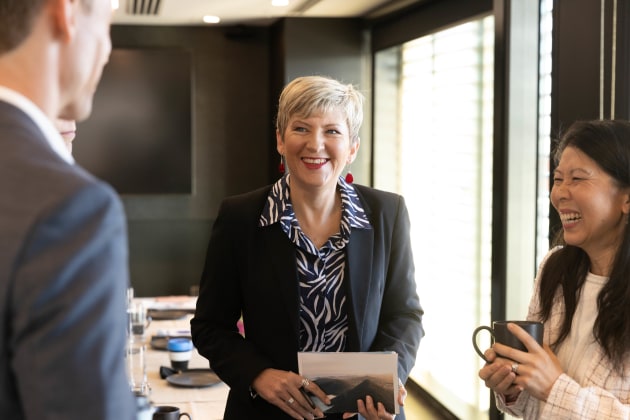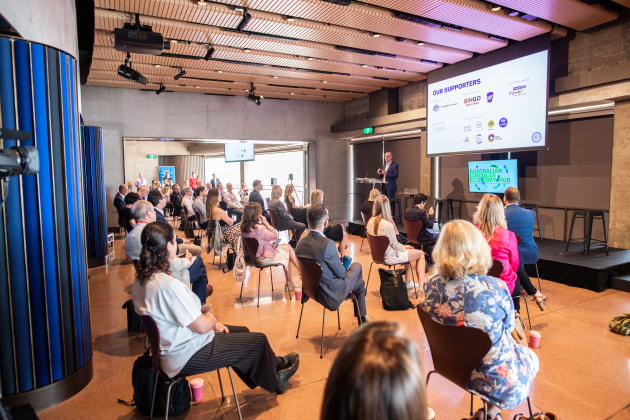As the packaging industry works towards aligning to the circular economy, PKN takes a closer look at how Planet Ark is helping.
The first principle of a circular economy – design out waste and pollution – has direct relevance to the packaging industry. Packaging design, however, has much at stake. Packaging designers are making important decisions – decisions that deliver packaging to not only contain, protect, preserve the product, the design also needs to inform the user. The packaging also needs to ensure the product is delivered in sound condition, at the optimum cost, using a coordinated system of preparation, transport, distribution, storage, retailing, and consider the end use of the product. In a circular economy, designing out waste and pollution, both during production and at end of life, are also added to this extensive list of considerations.
With so much at stake, how can designers deliver packaging that aligns with the principles of a circular economy?
As reported in PKN Packaging News in the July/August 2021 edition, sustainable packaging, particularly for flexible packaging, is on the rise. This is not new news for the Australian and New Zealand Packaging Innovation Design Award (PIDA) winners recognised by the Australian Institute of Packaging over the last five years, many of whom have gone on to win World Packaging Organisation awards. The question to ask, however, is sustainable packaging helping to address the principles of a circular economy?
Head of Circular Economy Development for Planet Ark, Dr Nicole Garofano, says yes, sustainable packaging design does help. Garofano explains there are three principles of the circular economy (CE): “The first, as mentioned earlier, is to design out waste and pollution. The remaining two principles are keeping materials and products in use for longer and at their highest value, and to regenerate natural systems,” she says. “I would argue, the most commonly referred to principle in packaging discussions is the second one, the one that refers to recovery and recycling. The focus on this principle is to be applauded, however, it is the conversation back up at the principle one where a much greater attention needs to be placed.”
Planet Ark has been working with Australians to encourage positive environmental actions since 1992. Encouraging those actions has required a strong focus on behaviour change. One of the actions to support change that straddles the packaging industry and the consuming public is the Australasian Recycling Label (ARL) Program. Planet Ark has partnered with the Australian Packaging Covenant Organisation (APCO) and the Packaging Recyclability Evaluation Portal (PREP) to deliver the ARL program.
Australasian Recycling Label Program
Planet Ark’s ARL campaign manager, Alejandra Laclette says, “The ARL program delivers an on-pack labelling scheme helping designers to design packaging that enables clear recycling choices for consumers post-consumption.” Laclette also highlights there are benefits for consumers in both Australia and New Zealand who have less confusion on what they can do with their packaging, saving time, and reducing waste going to landfill.
Garofano also highlights the localised nature of the ARL. “The beauty of the ARL is the ability to design for Australian and New Zealand conditions,” Garofano says. “The ARL is only available to APCO members who have used the PREP tool, ensuring that all packaging displaying the ARL has been designed for recyclability in the markets where the products are to be sold.”

From a circular economy perspective, Garofano says, “The ARL helps designers address CE principles one and two, while also delivering sustainable packaging, as per APCO’s Sustainable Packaging Guidelines.”
Planet Ark’s role in the partnership is to help educate the community (households, school students, individuals) about the ARL. Since the end of 2019, the education campaigns have been viewed on social media, on television, and within schools. The messaging around the ARL on social media is ongoing, with the television campaign running from the end of 2020 into early 2021.
Schools have benefitted from the development of ARL lesson plans, from Foundation to Year 10, reaching some 80,000 students since first launched. Planet Ark has recently launched a unit plan specifically for the ARL including eight lesson plans for Years 5 and 6. A new digital media campaign is being launched ahead of National Recycling Week, taking place between 8 and 14 November 2021, where a range of activities will be promoted and encouraged.
Coffee Capsules
A second action that will see Planet Ark help to encourage behaviour change with packaging and the adoption of principle two of a circular economy is with the Coffee Capsule Product Stewardship Scheme (CCPSS). Planet Ark is one of 20 organisations to receive project funding from the Federal Government’s Product Stewardship Investment Fund. The Fund forms part of the Australian Government’s $167 million Australian Recycling Investment Plan and National Waste Policy Action Plan to increase Australia’s recycling rates, tackle plastic waste and litter and halve food waste by 2030.
CCPSS Project technical manager, Dr Sean O’Malley says, “The scheme is being developed in partnership with Nespresso and Woolworths Group and will address the capsules available on the domestic market in Australia.” O’Malley explained that to ensure widespread engagement in the scheme, the project team is working with a range of other stakeholders including retailers, coffee brands and local and international manufacturers.
The CCPSS will include aluminium, compostable, plastic and hybrid capsules. The project will not only determine the fate of the packaging, but also of the coffee grounds themselves, providing some innovative alternatives to disposal to landfill.
Coffee drinkers will need to wait until later in 2022 to start participating in the scheme. However, with the interest already shown through the stakeholder consultation conducted to date, there will be positive opportunities for improved recovery for all brands across the range of systems.
ACE Hub
The latest major initiative from Planet Ark, the Australian Circular Economy Hub (ACE Hub), provides an umbrella for the future of circular economy related activities in Australia with a focus on government and industry. Dr Garofano says, “Planet Ark is facilitating the transition to a circular economy in Australia by providing a focal point for circular economy knowledge and inspiration in Australia. Since the launch of the ACE Hub in November 2020, we have been working with stakeholders to provide information and connections to raise awareness of the circular economy and to showcase those already on their CE pathways.”
Garofano says the end of 2021 will see the launch of several reports and events, including the 2021 Circularity in Australian Business Report. “We know that Australian business leaders believe the circular economy will be important to the future of their business. We also know that business leaders need information and knowledge to take action towards a circular economy. Providing this information and knowledge is a core focus on our 2022 activities. Watch this space to learn more!” she says.
For packaging, Garofano says, there is much to applaud and much to achieve. “We are seeing significant shifts in the design of packaging, as we saw with this year’s PIDA Sustainable Packaging Category awardees. Many designers are already making the transition to a circular economy. But there is much more to do – not only to design out waste and pollution, but to innovate in packaging decisions of how packaging can be reduced in the first place. This will always be the first goal and one that will take innovative engineers ready to take brave steps into shifting the paradigm of packaging globally,” Garofano says.
No single community, company, industry, government or country can transition our world economy. The circular economy needs to cross borders, cross sectors, and work with all to make this important shift.
Planet Ark is looking forward to supporting this transition – for now and the future.
This article was first published in the November-December 2021 print issue of PKN Packaging News, p22.







